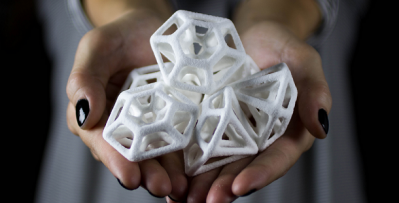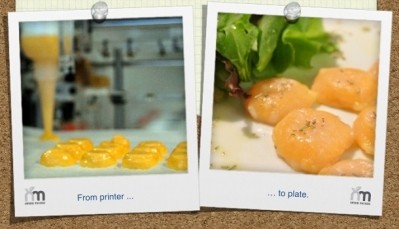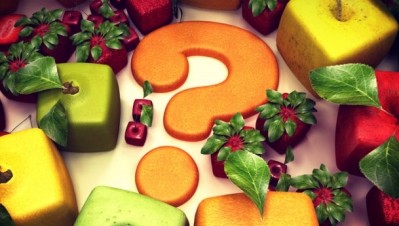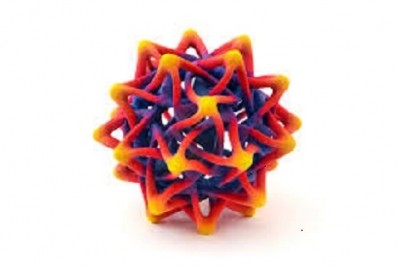Cornell Institute For Food Systems
3D food printers could come to consumer kitchens in near future
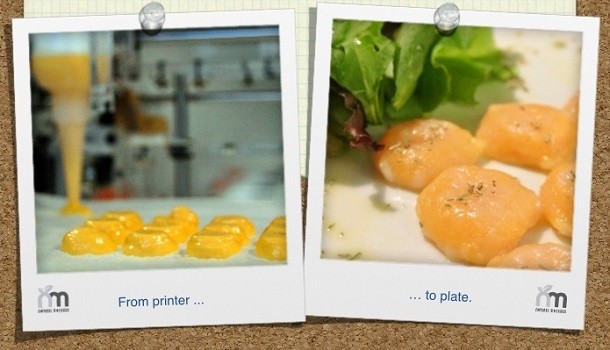
In the last four years, 3D printers that make objects by stacking material up in layers have taken off “in a big way,” and are no longer novelty items used to produce “frivolous chotchkies” exclusively in research centers and giant corporations, according to Hod Lipson, an associate professor at Cornell University, who works with 3D printers.
Lipson acknowledged at the Cornell Food Systems Global Summit hosted by the Cornell Institute for Food Systems that cutting through the hype about 3D printing and identifying where the technology is going in the long term is difficult, but he says he firmly believes that the “killer ap” for the machines is in food production.
He explained that increased awareness about 3D printing, which has been around for the last 30 years, is prompting more companies, such as Barilla and Mondelez International, to invest in the technology. This is driving down the costs of the printers from the more than $500,000 that they originally cost to about $1,000 for the smaller, lower tech machines that work with plastic.
Some of these machines are even becoming available at the consumer level. Natural Machines is working on a 3D food printer called Foodini, which will use “fresh, real ingredients” to “print all types of real, fresh, nutritious foods, from savory to sweet,” according to the firm’s website. The printer is not available yet, but according to media reports it was originally slated to launch this year for the low price of $1,300.
As demonstrated by the Foodini, the range of materials that can be used in 3D printers is expanding quickly – another factor in the technology’s quick uptake in the last few years, Lipson said. He noted that originally the printers primarily used soft plastics, but now the printers can handle materials ranging from wood and glass to sugar and Cheez Whiz.
Lipson also noted the overall quality of 3D printers is improving, making their final products more appealing.
“The printers now are more economic, faster, cheaper and better with more materials and smoother, faster printing,” he said.
Opportunities for mass customization
As 3D printing continues to be refined, it offers significant opportunities to the food industry – in particular for consumer packaged goods and “processed foods, which are very amenable to printing,” Lipson said.
For example, 3D printing offers “infinite varieties” of foods available on-demand, he said. “In contrast to the current model of limited variety and infinite shelf-life,” 3D printing could make 2,000 fresh products available at the push of a button.
Similarly, 3D printing “opens the door to mass customization” of flavors, shapes and sizes, which is something consumers are demanding increasingly. At SXSW this year, Mondelez International printed customized Oreos in about two minutes in flavors including birthday cake, mint and lime, among others.
Creating foods and meals based on individual real-time biometrics also could be possible with 3D printing, Lipson said. He explained that tests he and his students conducted in the Cornell lab using sugar in cookies shows that 3D printing offers “extensive nutritional control” over the ingredients so that cooking could be paired with managing health conditions, such as diabetes.
“Imagine [printing] breakfast based on what your body needs on the fly,” he said.
3D printers also could make other emerging food trends more palatable, Lipson said. For example, it could turn insect-based ingredients into meals that look nothing like bugs – making the inexpensive protein sources appear less “gross” to Western consumers who are not accustomed to eating insects. (Read more about how 3D printed insect snacks could be the taste of the future HERE).
This shows “there are interesting ways to use this technology to address new foods that are not easily addressed in conventional ways,” said Lipson.
Challenges remain
Before these options can become a widespread reality, 3D printing must overcome a few challenges, Lipson said.
He noted that printing can take several hours, which might seem too slow for most consumers. However, he noted, the time likely would be hands off so cooks could select their food and do other tasks while it printed – similar to how people use slow-cookers now.
More research also needs to be done on how the ingredients work together in the printer and more ingredients needs to be made printer-friendly, he said. Likewise, most printers can handle only a few ingredients at a time and the machines are difficult to clean.
Nonetheless, Lipson is betting on 3D printing as the wave of the not-so-distant future for cooking.

